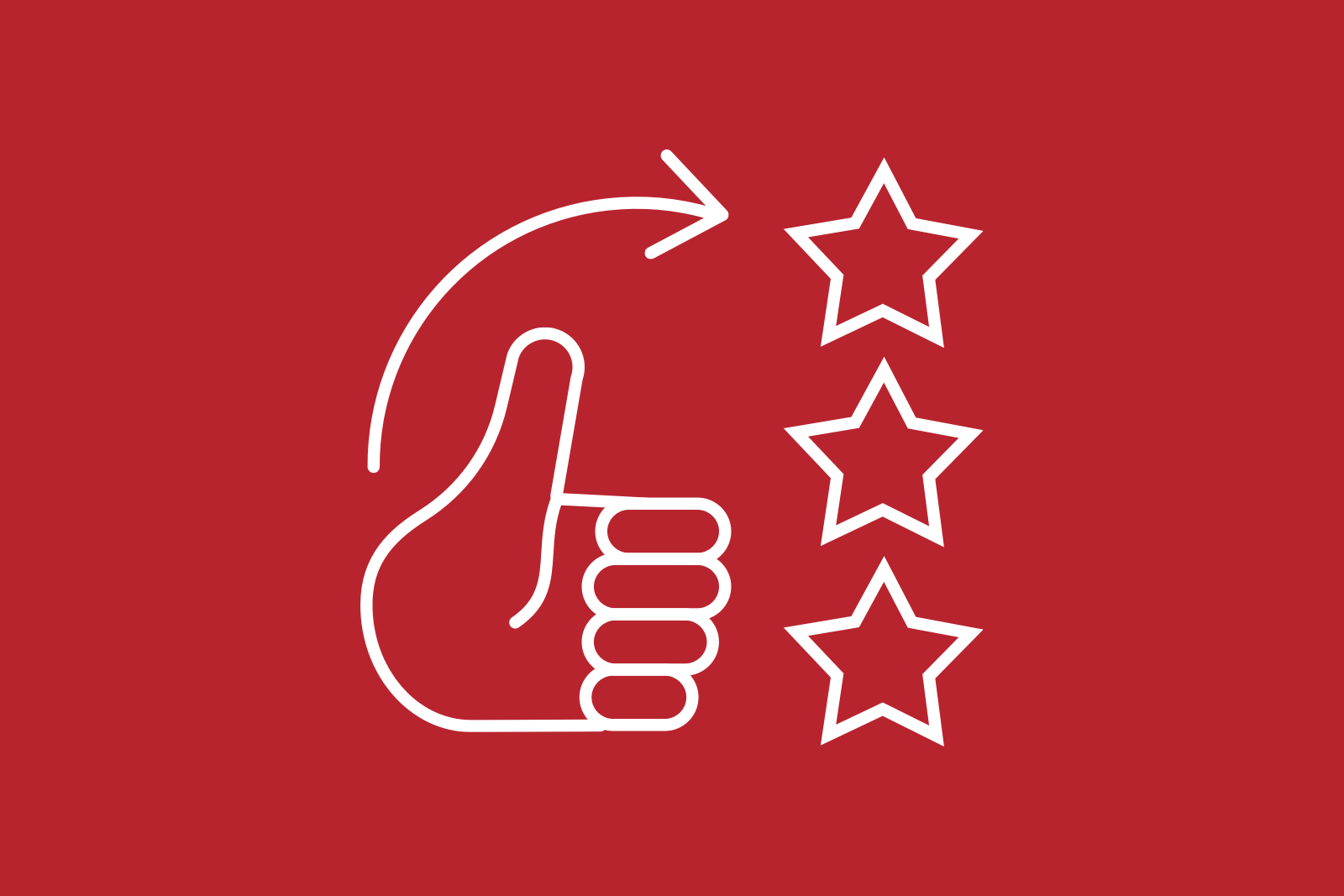Consumer Research for the Win

Conducting consumer research is a time-tested and effective way to inform loyalty program decisions. Moreover, qualitative and quantitative research offers strategic opportunities to gather the perspectives of your brand’s target consumers. Relying on assumptions alone could put your value proposition and budget at risk.
The most effective loyalty programs are informed by data—at their inception and moving forward. In fact, data is the bedrock on which loyalty programs are built, maintained, and expanded. And consumer research—i.e., gathering individuals’ opinions about products or services—is one of the many data sources brands should consider.
During the loyalty program design process, consumer research helps your brand determine if a program’s value proposition will resonate with your audience. Research can help your brand answer key questions, including:
-
Does our program offer a value attractive enough to engage customers?
-
Is our program compelling enough to keep members active?
-
What’s the best name and positioning for our program?
-
Does our program align with broader brand values?
Consumer research can help guide your brand’s decisions about a loyalty program structure that’s most likely to appeal to your customers. For example, research can help you determine if your members are interested in earning points or if they’d rather receive benefits. Would a tiered structure make sense for your program, or would your long-time and target customers find that a turnoff? Research can also help you hone in on appealing program specifics that will inspire your customers to stay loyal—and, ideally, even aspire to reach a particular award or status.
Let’s dive in. Structured consumer research is usually separated into two types: qualitative and quantitative.
Qualitative research explains why
Qualitative research provides opportunities to get to know your customers by capturing their thoughts directly and in their own words. Qualitative research focuses on why people feel the way they do. It’s often gathered through open-ended questions posed via interviews or focus groups.
Qualitative research helps program designers understand:
-
how much complexity customers are willing to accept
-
the benefits customers expect from a program
-
the extent to which customers will potentially engage
-
what motivates customers and what doesn’t
An experienced facilitator coaxes participants to share their genuine reactions and, more importantly, draw out the reasons that underpin them. Research participants that provide one-word or yes/no responses should be prompted to provide additional context.
This “voice of the customer” research is useful early in program development. Consumers’ perspectives can help shape the direction a concept might take. It’s beneficial to understand what your customers think about your brand, what pain points they’re experiencing, and how they envision a loyalty program could support and enhance their brand experience.
Qualitative research is also insightful later in program development. For example, consumer responses can help you gauge reactions to a specific idea or concept. It can also help your team decide between potential constructs by including the “color commentary” needed to support a direction.
Perhaps, for example, three potential constructs are under consideration. One program design awards points for spend, another focuses on service benefits, and a third features “surprise and delight” rewards. Qualitative research reveals which one of the three holds more appeal for your customers than the others and why that’s the case. Alternately, qualitative research may help you identify themes—such as fun, simplicity, exclusivity, or value—that resonate with customers. You can use that information to ensure your loyalty program’s design aligns with those priorities.
It’s important to note that findings from qualitative research are descriptive and limited to themes. That’s largely because qualitative research typically relies on small sample groups that usually aren’t random. Suppose a research exercise includes interviewing ten customers handpicked to represent different segments, genders, ages, or geographies, and eight say they’d enroll in a particular program. This sample isn’t large enough to extrapolate that 80% of your brand’s customers would enroll in the program.
Similarly, let’s say one customer who happens to be female and Gen Z—let’s call her Ava—says she’d absolutely participate in your program. That’s great, but we can’t assume all female Gen Zers will clamor to join.
One of the most insightful pieces of data that comes from qualitative research is customer vocabulary preferences. For example, is “tier” the most appealing term? How about “level”? Or is “status” a better choice? Knowing the words that best resonate with your target audience gives you an advantage when designing a successful program.
Customer anecdotes derived from qualitative research are also useful. Marketers often believe they know how their customers use or think about their products or services. But what customers actually say in research can be surprising—and revealing. For some brands, an elite tier that includes enhanced benefits for some loyalty members is acceptable, even expected. For others, member tiers might be perceived as elitist or off brand. What would your customers say? Customer anecdotes gathered in qualitative research can be transformed into illustrative use cases to help brands refine their loyalty design.
Quantitative research provides a snapshot of the big picture
Remember Ava? Quantitative research can delve into whether her enthusiasm for your program accurately reflect the brand’s female Gen Z customers or if she’s an outlier.
Quantitative research goes to a larger audience to obtain information at scale. This results in capturing greater feedback across a group of Avas instead of Ava’s single voice.
The vocabulary used by customers in qualitative research should be used to inform the question design and answer options that are offered in quantitative research. Quantitative research questions are typically closed-ended—meaning they can often be answered with a simple “yes” or “no,” or they’re multiple choice or ask for a scaled response. That design results in numerical data that can be measured and compared.
Thoughtfully designed research that utilizes a large enough sample generally provides sufficient data to complete analysis on various segments and demographics. And that helps you understand your loyalty program’s appeal across diverse customer groups. Segments often include:
-
new customers versus mature customers
-
current members (if applicable) versus nonmembers
-
low-frequency purchasers versus higher-frequency purchasers
-
low-value customers versus high-value customers
-
online shoppers versus in-store shoppers versus multichannel customers
If your research includes a large enough sample of respondents, data from your quantitative study can inform other aspects of program concept development, such as economic models.
For example, suppose you randomly sample 1,000 customers, and 800 indicate they’d enroll in your program. That sample size may be significant enough to conclude that around 80% of customers would enroll. That’s useful information when projecting program costs and potential return on investment.
Beyond program enrollment, quantitative research can help your loyalty team prioritize reward types, benefits, and other program features. Data points generated can help you predict, for example, members’ preferred reward choices or the percentage of members likely to embrace various program benefits.
Absent actual utilization data, quantitative research can help your team anticipate member behavior, which, in turn, allows more accurate estimates of expected costs associated with different program features.
Ongoing research to improve and evolve
Once your program is in market, research remains an extremely valuable diagnostic tool. Some program managers regularly measure appeal to stay apprised of changes in consumer sentiment. Metrics showing your brand’s loyalty program’s appeal is in decline may signal that it’s time to refresh the value proposition. Some of the today’s most popular programs, including Starbucks, Nordstrom, and Walgreens have refreshed significantly from their original constructs—likely due, at least in part, to consumer feedback via quantitative and qualitative research.
To remain relevant, loyalty programs must continuously evolve by seeking out and implementing enhancements that appeal to customers, and by delivering rational and emotional benefits.
As loyalty program managers consider adjustments over time, conducting research is a great way to determine which new ideas excite program members and which ideas don’t—and even to what degree those preferences are true. These insights will help loyalty teams prioritize resources and deliver the most engaging loyalty opportunities.
Perhaps research doesn’t sound immediately captivating, but it’s actually a fascinating part of loyalty program design and maintenance. Hearing directly from customers is exciting—especially learning their responses to the creative ideas your brand shares with them. Research gives your brand an advantage in developing loyalty concepts—and in keeping programs up to date and appealing. Success on those fronts translates into loyal customers and, ultimately, boosts your brand’s bottom line.
Nina Rose is senior director, Strategic Services for The Lacek Group, a Minneapolis-based data-driven loyalty, experience, and customer engagement agency that has been delivering personalization at scale for its world-class clients for more than 30 years. The Lacek Group is an Ogilvy company.

